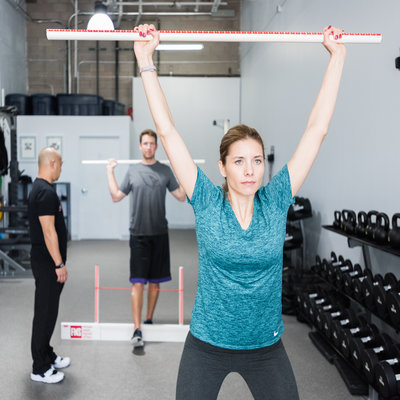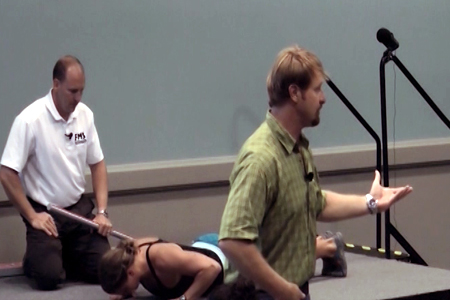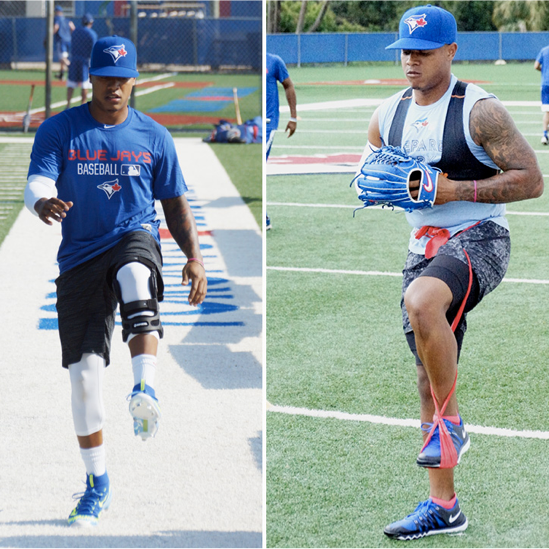How to Optimize Golf Performance Using the FMS
Written by Spencer Tatum FMS
As we know, the sport of golf is both simple and complex. It requires unique and efficient athletic attributes such as movement skills, speed, power, accuracy and body control. At Tatum Human Performance, we believe there needs to be a screening process to ensure the golf athlete can play the game to their best. The objective of this screening process is to discover where the limiter base is in the following categories:
- Body: Health, Function, Strength, Power, Speed, Endurance, Lifestyle and Nutrition.
- Technical: Is the athlete having swing issues that are not the body or lifestyle-related?
- Equipment: Does the equipment fit the player and their game?
- Strategy: Is the golfer not playing well due to poor course management?
In this article, we will discuss how the body screen and Functional Movement Screen (FMS) are integral to our process in understanding necessary actions to optimize golf performance.
The Body Screen
Before we begin the FMS, we must gain some basic information to fully grasp how the body is working. The “Ignite Screen” gives our team a chance to learn about past challenges, sport development, training age, injuries, barriers, goals, needs, motivation style, nutrition, sleep, lifestyle, personal preferences, and communication. This process provides a way to catch any red flags and ensures that we are meeting the client’s desires. The information will provide us with a base to understand the athlete’s movement screen.
Once the Ignite Screen is complete, we move to a Body Composition Screen. We use the award-winning BIA body composition analyzer, InBody USA. We use the screen to understand how they manage stress and to make certain their health fits their goals. After all, a lack of health may be the reason why they are not moving as well as they could. Their Body Composition score is then rolled into the FMS.
Before we go any further, we want you to have an understanding of why we have a stringent process leading up to actual training. For a golfer to deliver a successful swing, they must be able to do the following:
- Proper set-up
- Load into the hip while maintaining posture
- Disassociate upper and lower body on both sides in rotation movement
- De-accelerate and accelerate the body under control
- Sequence the body properly to create speed and power with efficient movement skills
The FMS is a great way to see an athlete's ability in achieving an effortless golf swing. Now, let’s look at the 7 different screens and how it connects to a golf swing.
The Big Three
Deep Squat is the ability to squat the lower body at the hips; separate the upper body from the lower body in a sagittal plane; prerequisite to achieving success in lower body power.
The Deep Squat is a vital pattern for creating a successful golf swing. If this pattern is not at acceptable levels, they could have limited power from the lower body, loss of posture in their golf swing and, most likely, early extension in their golf swing. The challenge could not only lead to many loss strokes and bad ball positions but possible overuse injuries.
Hurdle Step isthe ability to accelerate; single-leg stability; ability to go from two feet to one foot and back to two feet.
The Hurdle Step is a screen that gives insight into one's ability to express clubhead speed. A hurdle step that is sub-par can be the cause of poor clubhead speed, sway and slide, and hang back. The common phrase that you will hear from golfers with unacceptable hurdle steps is that they can feel the ground.
Inline Lunge is the ability to decelerate; lower body loading in a split stance with adequate levels of body control or stability.
The Inline Lunge provides the information necessary to evaluate the ability to load a backswing and change direction into the downswing. A lopsided Inline Lunge can lead to reverse spine angle, early extension, loss of posture and forward lunge. The athlete can only accelerate the golf club as much as they can decelerate. Signs of a poor Inline Lunge would be struggling with transition, feeling the power from the ground in their downswing, or the lack of clubhead speed.
The Fundamental Four
As you can see, the FMS has quite a big impact on an athlete’s golf swing. I must stress the importance of screening properly to get the right information. In a future article, we will dive deeper into how to make the right decisions based on the screen results and how a particular screen correlates to certain swing issues. The FMS is only one part of the equation for optimizing golf performance.
For one to be a great golfer, they must move well and optimize human performance. Take a look at some progressions we took one of my professional golfers through!
Want to know more about movement evaluation and the Functional Movement Screen? Check out FMS 1 Online to learn the basics of the Screen and how to use it when training your clients and athletes.
Author

Spencer is the founder and performance director of THP in Scottsdale, AZ. His unique approach to fitness, performance training, and coaching stems from his experience as an elite college athlete and the pain of injuries. As much pain and fulfillment came from playing in college, it also brought a tremendous amount of learning and inspiration to develop a different way of looking at the human body. This caused Spencer to dive into learning how to optimize the human body and provided him the motivation to get his degree in Exercise Physiology at Ohio University and numerous certifications in different disciplines. Spencer is now a leader and innovator in the field. He developed a unique niche in the sports world, especially in golf, being named Top 50 Best Golf Fitness Training in America by Golf Digest and winning a National Championship with the ASU Golf Team. He has been featured on ESPN for his work in the NFL; CBS sports for his training with Jon Rahm; PGA Tour Superstar and numerous other media forms. Furthermore, Spencer is a husband and father that loves learning, movies, and new adventures that challenge the human spirit.
Related Resources
-
Movement Principle # 7
Posted by Gray Cook
Please login to leave a comment
1 Comments
-

Alexandra Nataluk 7/20/2020 2:15:58 PM
Super helpful! Thanks!








